USB-C to HDMI In 2025, USB-C to HDMI connections have completely changed the way we get second screens and connect devices. Hell, you don’t need to carry at least 2 or 3 cables or fight with different ports from now on. This breakthrough technology allows you to connect the laptop to a TV using USB-C/USB 3.0 with a single cable – no more carrying around cabling to wire your laptop’s video output to your TV.
Whether you are streaming movies from your phone to your TV or need to give a presentation on your MacBook, knowing how to use a USB-C to HDMI adapter will save you time and frustration. In this guide, we’ll take a close look at everything you should consider before you invest in this game-changing connectivity option.
What Is USB-C to HDMI and Why Does It Matter in 2025
USB-C to HDMI represents a significant leap forward in audio/video quality and convenience. Plain and simple, this enables you to transmit video and audio signals from your single (dummy) USB-C port device to any HDMI-compatible display via one cable or adapter in a matter of seconds.
The magic is enabled by something called DisplayPort Alt Mode. This feature allows your USB-C port to carry video signals in addition to data and power. Consider it a universal translator that’s fluent in both USB-C and HDMI.
The Technology Behind the Connection
Your USB-C video output can handle impressive specifications:
- Resolution Support: Up to 8K at 60Hz with newer devices
- Data Transfer: Up to 40 Gbps with USB4 standards
- Power Delivery: Up to 240W for charging while displaying
- Audio Quality: Multi-channel audio including Dolby Atmos
Why This Connection Matters Now
New gadgets are becoming slimmer and more portable. Manufacturers are also eliminating a variety of ports in favor of a few more versatile USB-C connections. Now, your phone has access to a 4 K display. You can turn your tablet into a professional workstation. It’s this cross-pollination that makes a USB-C to HDMI connection a must-have for:
- Professional Presentations: No more hunting for dongles in meeting rooms
- Gaming Sessions: USB-C to HDMI for gaming delivers smooth 120Hz gameplay
- Content Creation: Mirror screen via USB-C for real-time editing
- Home Entertainment: Stream directly from any device to your TV
How to Use USB-C to HDMI: A Simple Setup Guide
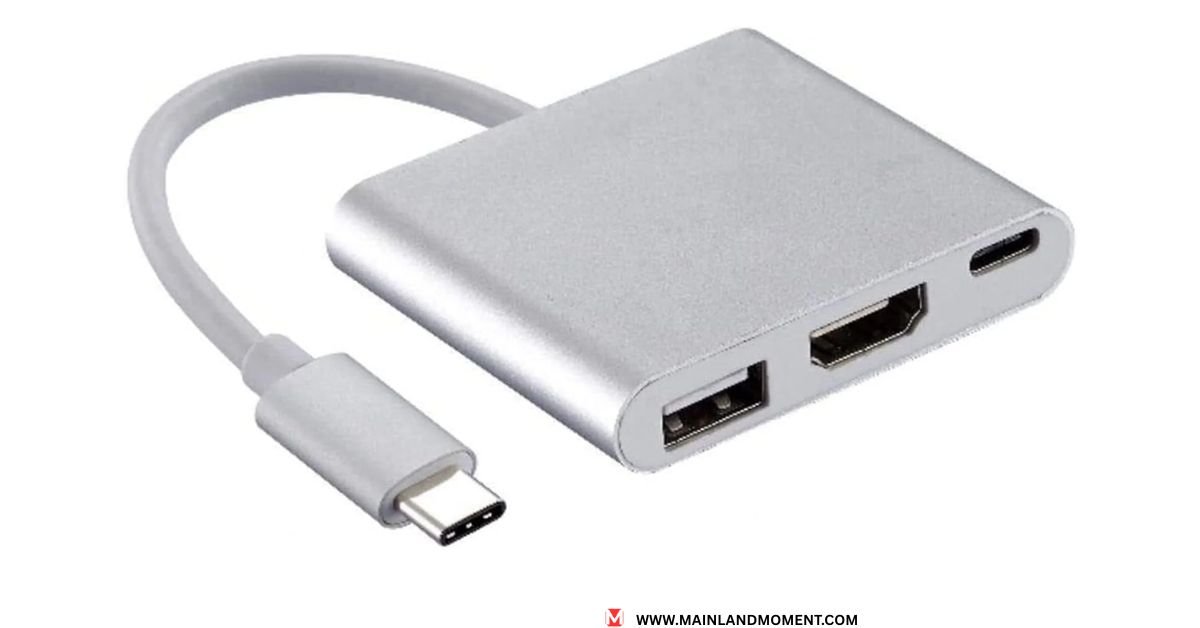
Hooking up your gadgets through USB-C to HDMI is as easy as pie to achieve in three steps. Here’s how to avoid the tech headaches with USB-C to HDMI.
Step One: Check Your Device Compatibility
Not all USB-C ports support video output. Look for these indicators:
- Thunderbolt Symbol: Lightning bolt icon near the port
- DisplayPort Icon: “DP” marking on newer devices
- Manufacturer Specs: Check your device manual for Alt Mode support
Popular devices with confirmed support include the iPhone 15 series, the Samsung Galaxy S24 lineup, the MacBook Pro M4, and most Windows laptops from 2023 onwards.
Step Two: Choose Your Connection Method
You have two main options for USB-C to HDMI connectivity:
Direct Cable Option:
- Single cable from device to display
- Usually more reliable connection
- Less bulk in your bag
- Typically supports USB-C to HDMI 4K resolutions
Adapter Option:
- Use existing HDMI cables
- Often includes multiple ports
- Better for USB-C docking station setups
- May include power delivery features
Step Three: Make the Connection
The actual connection process is refreshingly simple:
- Power on your display first
- Connect the USB-C to HDMI cable to your device
- Plug the HDMI end into your display
- Select the correct HDMI input on your display
- Wait 5-10 seconds for automatic detection
Your device should recognize the display immediately. If not, check your display settings menu for manual detection options.
Top Devices That Support USB-C to HDMI in 2025
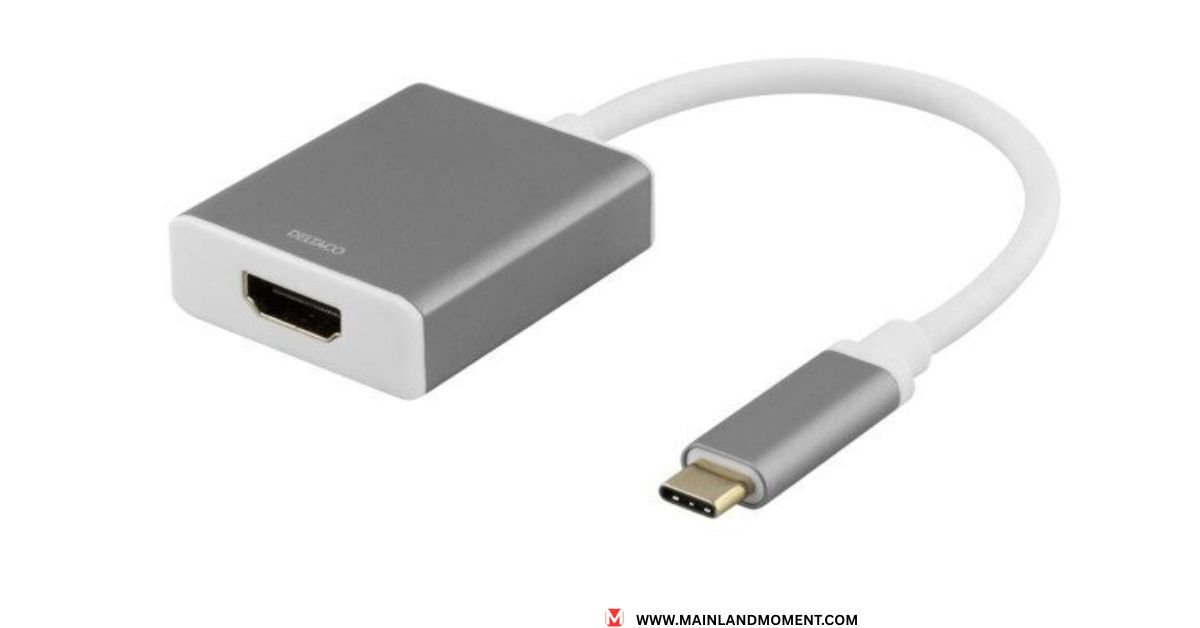
Smartphone Champions
iPhone 15/16 Series: USB-C brought the best HDMI support from Apple. The USB-C to HDMI for Samsung also connects well with iPhones and provides a 4K output at 60Hz.
Samsung Galaxy Devices: S24 Ultra and Note series offer brilliant resolution support via Type-C to HDMI, becoming capable of streaming in 8K with compatible displays.
Google Pixel Series: Pixel 8 Pro and other series allow Android screen mirroring via HDMI cable plug and play.
Laptop Powerhouses
MacBook Series: The Air and Pro are equally good at going USB-C to HDMI for MacBook. It supports several different 6K displays at once on M4 chips.
| MacBook Model | Max Resolution | Refresh Rate | Multiple Displays |
|---|---|---|---|
| MacBook Air M3 | 6K | 60Hz | 1 External |
| MacBook Pro 14" M4 | 8K | 60Hz | 2 External |
| MacBook Pro 16" M4 | 8K | 120Hz | 4 External |
Windows Laptops: The Latest models of Dell XPS, HP Spectre, and Lenovo ThinkPad series support HDMI input well.
Gaming Devices
Steam Deck OLED: Valve’s handheld supports 60Hz HDMI adapter connections for big-screen gaming sessions.
ROG Ally: ASUS designed this device with excellent USB-C to HDMI without lag performance for competitive gaming.
USB-C to HDMI Not Working? Quick Fixes That Work
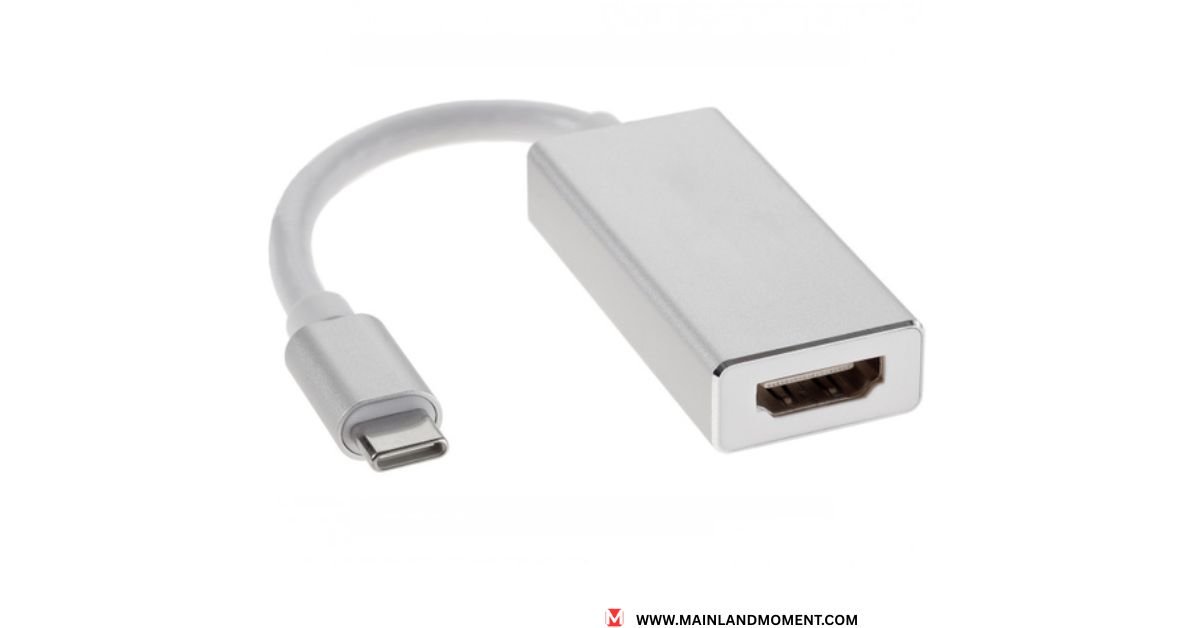
USB-C to HDMI not working issues frustrate users daily. Here are proven solutions that work.
Immediate Diagnostic Steps
Check Physical Connections:
- Ensure cables are fully inserted
- Try different USB-C ports if available
- Test with a different HDMI input
- Inspect cables for visible damage
Verify Power Requirements: Some USB-C to HDMI converter devices need additional power. If your laptop isn’t charging while connected, the port might lack sufficient power delivery.
Common Problems and Solutions
No Display Signal:
- Restart both devices
- Update display drivers
- Try a different USB-C to HDMI adapter
- Check your device’s display settings menu
Poor Image Quality:
- Adjust the resolution in display settings
- Enable USB-C to HDMI 4K mode if supported
- Check cable specifications for bandwidth limitations
Audio Issues: Does USB-C to HDMI support audio? Yes, but sometimes requires manual configuration:
- Set HDMI as the default audio device
- Check audio format compatibility
- Restart audio services if needed
Platform-Specific Solutions
Windows Users:
- Open Device Manager
- Update display adapters
- Run Windows troubleshooter
Mac Users:
- Reset NVRAM (hold Option+Command+P+R on startup)
- Check System Preferences > Displays
- Update macOS to the latest version
Best USB-C to HDMI Adapters You Can Buy Right Now
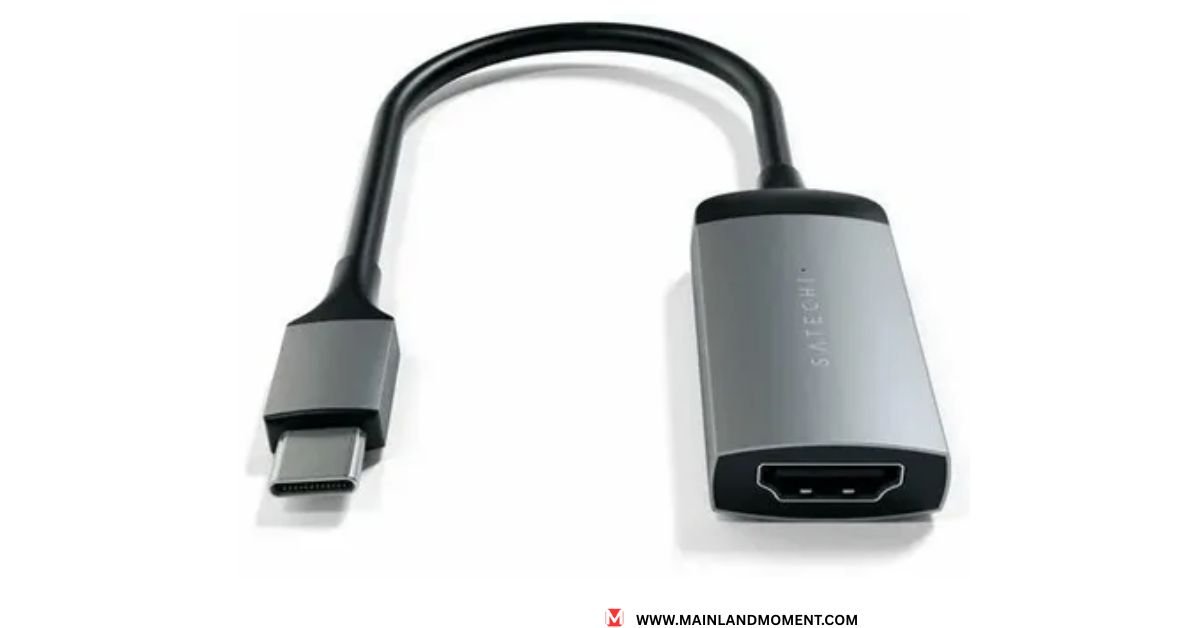
The best USB-C to HDMI adapter for you will depend on your needs and how much you want to spend. Below, some of our guiding picks in various categories.
Premium Performance Options
Anker PowerExpand Elite ($89)
- Supports 8K at 30Hz, 4K at 60Hz
- Includes multiple USB ports
- USB-C to HDMI with power delivery up to 85W
- Excellent build quality and reliability
CalDigit SOHO Dock ($149)
- Professional-grade reliability
- Multiple display support
- Perfect for creative professionals
USB-C 3.1 Gen 2 to HDMI compatibility
Budget-Friendly Champions
UGREEN USB-C to HDMI Adapter ($19)
- Best budget USB-C to HDMI option
- Supports 4K at 30Hz
- Compact and portable design
- Great for basic connectivity needs
Amazon Basics USB-C to HDMI ($12)
- Reliable performance for simple tasks
- 30-day return policy for peace of mind
- Compatible with most devices
Specialized Solutions
For Gamers: The Cable Matters USB-C to HDMI adapter ($34) provides the low-latency performance necessary for competitive gaming.
For MacBook Users: Satechi USB-C Hub ($79) The Satechi USB-C Hub not only matches your MacBook’s minimalist aesthetics it also gives you phenomenal USB-C to HDMI for MacBook performance.
USB-C vs HDMI: What's the Real Difference?
Knowing the difference between USB-C and HDMI can lead to better connectivity choices.
Physical Connector Comparison
USB-C Advantages:
- Reversible design (no wrong way to plug in)
- Smaller, more modern connector
- Carries power, data, and video simultaneously
- Future-proof technology
HDMI Strengths:
- Universal display compatibility
- Dedicated video connection
- Mature, stable technology
- No compatibility guesswork
Performance Capabilities
| Feature | USB-C | HDMI 2.1 |
|---|---|---|
| Max Resolution | 8K at 60Hz | 8K at 60Hz |
| Refresh Rate | Up to 240Hz | Up to 120Hz |
| Power Delivery | Up to 240W | None |
| Audio Channels | Up to 32 | Up to 32 |
When to Choose USB-C to HDMI
USB-C to HDMI connections excel when you need:
- Single-cable solutions for laptops
- Power delivery while displaying
- Modern, reversible connectors
- Future compatibility with newer devices
Direct HDMI works better for:
- Permanent entertainment setups
- Legacy device compatibility
- Maximum reliability requirements
- Professional broadcast applications
Troubleshoot USB-C to HDMI Connection Issues
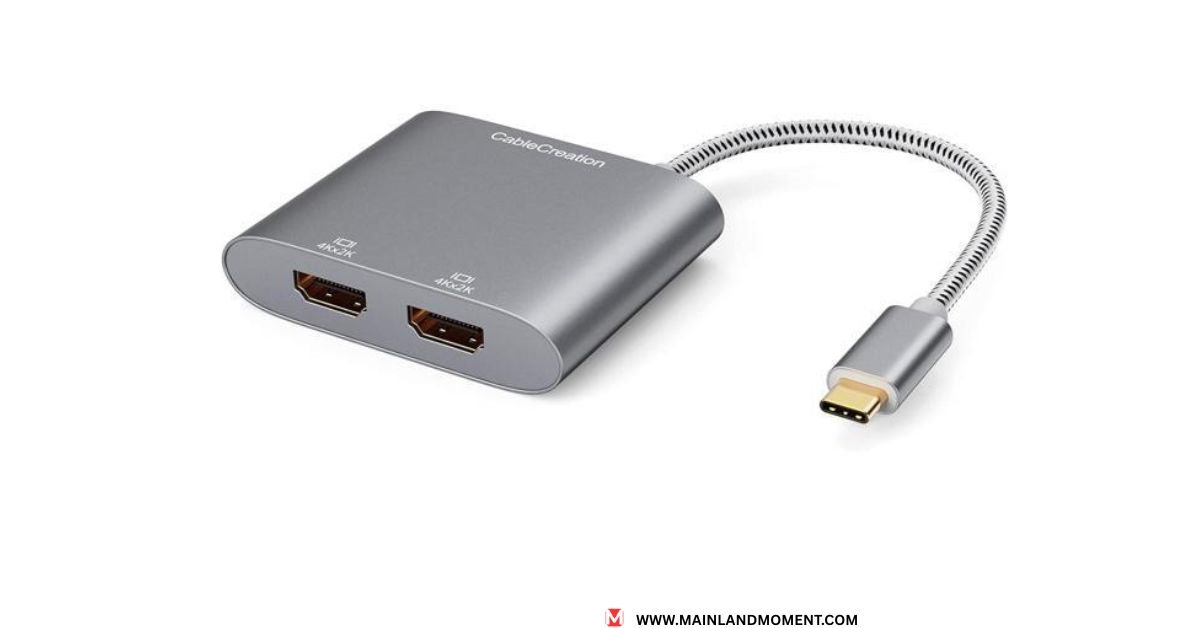
When facing USB-C to HDMI display issues, systematic troubleshooting saves time and frustration.
Advanced Troubleshooting Steps
Driver and Software Issues:
- Download the latest graphics drivers from the manufacturer’s websites
- Check for Windows updates or macOS updates
- Restart display services in Task Manager (Windows)
Hardware Diagnostics:
- Test the USB-C to HDMI adapter with different devices
- Try alternative cables to isolate problems
- Check if other USB-C functions work properly
Power-Related Problems: Certain devices have trouble powering up while outputting video. You may want to invest in a powered USB-C docking station for uninterrupted performance.
READ MORE ABOUT: USB C to HDMI Multiport Adapter Cable with Charging Port
Frequently Asked Questions
Is USB-C to HDMI compatible with all devices?
Not all USB-C ports are built to output video. Your device has to support DisplayPort Alt Mode. Look up your device specifications, or search for Thunderbolt/DisplayPort symbols next to or above the USB-C port.
What to look for in a USB-C to HDMI adapter?
Think about a maximum resolution (4K/8K) support, refresh rate support, power delivery, build quality, and whether it will be compatible with your devices. Premium adapters are more reliable and have higher performance.
Why is my USB-C to HDMI not working?
Common causes include incompatible devices, outdated drivers, insufficient power delivery, or faulty cables. Try different ports, update drivers, and verify your device supports video output through USB-C.
Does USB-C to HDMI support audio?
Yes, USB-C to HDMI connections typically carry both video and audio signals. You may need to manually select HDMI as your audio output device in your system settings.
Can I use USB-C to HDMI for 4K gaming?
Yes, quality USB-C to HDMI adapters support 4K gaming at 60Hz. For higher refresh rates, ensure both your adapter and display support the desired specifications. Some adapters handle 4K at 120Hz with compatible hardware.
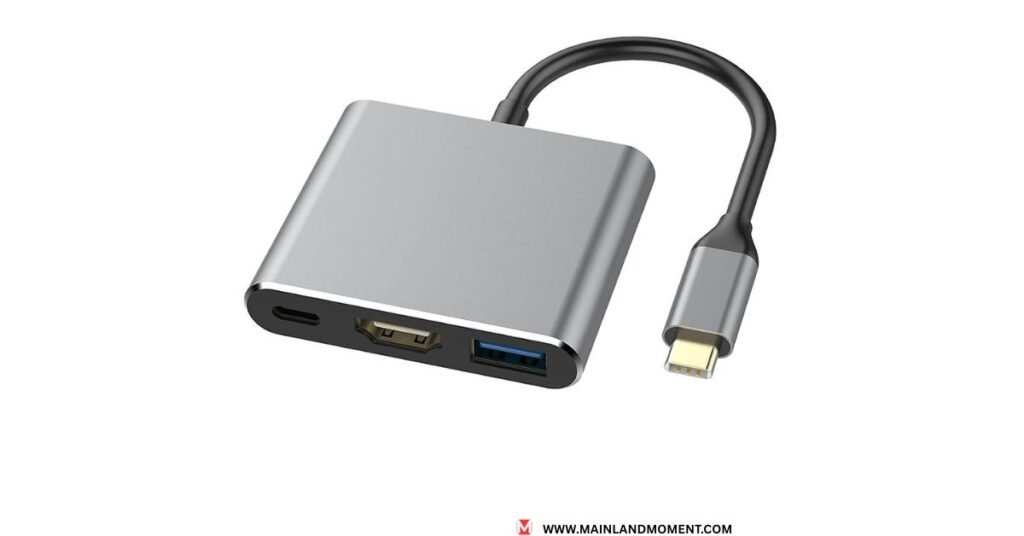


Pingback: Best USB-C Adapters For Laptops, Phones & Tablets In 2025 - The Mainland Moment
Pingback: Best USB-C Adapters For Laptops, Phones & Tablets In 2025
Pingback: Top 10 Portable Monitors For Laptops: Work & Play On-the-Go